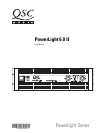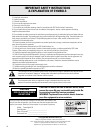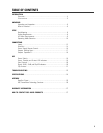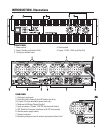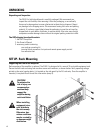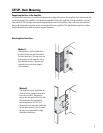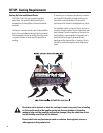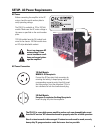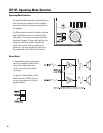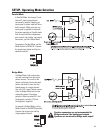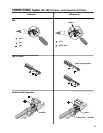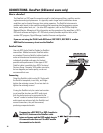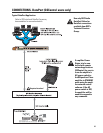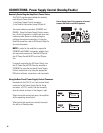
4
INTRODUCTION- General Overview
Thank you and congratulations on your purchase
of the QSC PowerLight 6.0 II professional power
amplifier. This product represents the state-of-
the-art in power amplification systems for
professional touring, permanent installations,
and other SR (sound reinforcement) applications
requiring high levels of sustained power,
extraordinary audio performance, reduced
weight, and road-proven reliability. To get the
most from your investment, we encourage you
to review this manual carefully.
Part of the advanced technology PowerLight
family of amplifiers, the PowerLight 6.0 II
benefits from QSC’s exclusive PowerWave
switching technology, its DataPort for remote
computer control, and an enhanced design that
provides greater airflow through the chassis—
facilitating cooler, more efficient operation.
QSC PowerWave Technology
QSC’s PowerWave switching power supply
technology provides ample current to the audio
power circuitry by charging the supply rails
180,000 times per second through an ultra-low
impedance circuit. This high-efficiency design
cuts waste heat and boosts reliability while
delivering the added benefits of tighter bass and
transparent highs for a more musical sound.
The PowerLight 6.0 II utilizes an enhanced,
second-generation power supply design. This
new design reduces both EMI (electromagnetic
interference) and the overall weight of the
unit—enabling far greater placement options
when positioning equipment. In the unlikely
event your unit ever requires service, the new
power supply design offers several additional
benefits—including greater ease of service,
resulting in reduced labor time and lower
replacement costs.
Remote Computer Control
The PowerLight 6.0 II also incorporates QSC’s
unique DataPort for remote computer control.
Using QSControl, QSC’s network audio system,
you can monitor and control hundreds of amplifi-
ers simultaneously, as well as perform a wide
range of advanced functions—including event
logging, checking the thermal status of the
amplifier, plus real-time monitoring of loud-
speaker opens and shorts.
What’s the difference between the “new”
PL6.0 II and the “old” PL6.0? The chart, right,
compares the two. Output power and AC
current consumption are the specifications
that have changed slightly. Output power is -
0.9dB at 8 ohms, and -1.04dB at 4 ohms. 2
ohms power remains unchanged. AC current
draw variations are a result of power factor
correction removal and power supply
topology changes. These changes improve
reliability of the amplifier under the most
demanding output conditions.



